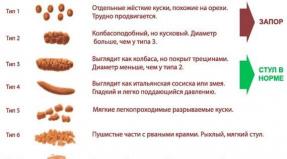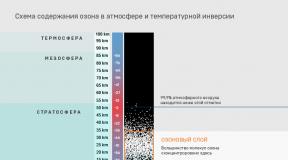Guidelines for the identification and alienation of non-core assets. Non-core assets Core assets
Analysis of the situation Issues. Trends 3 1

2011 Non-core assets. Analysis of the situation. Impact of the crisis Russian banks are a load of non-core assets (pre-crisis investments). Growth in overdue debts of borrowers to banks (transfer of collateral assets to the balance sheet). Actual. Working with non-core assets and collateral. Changing the strategy of the enterprise. Changing the technological chain. Reorganization. Actual. Work with non-core assets. 4

2011 Situation analysis. Statistics 5 Diagram 1. According to experts of the Central Bank at the beginning of 2011, about 70% of collateral in 20 largest Russian banks

Project risk management 6 2


2011 Forms of management of non-core assets 8 Bank Industrial enterprise Balance sheet Subsidiary closed-end mutual fund Independent company Scheme 1. Selection criteria: Options for financing the structure of management of non-core assets; Economic efficiency of the non-core asset management structure; Control by the organization over the structure of management of non-core assets; Distribution of functions between the organization and the asset management structure; Possibility of refinancing and return of invested funds.
2011 Forms of management of non-core assets (continued) 9 Method of management Advantages Disadvantages Localization of assets on the balance sheet of the organization Minimum costs at the stage of registration Inadequately expensive maintenance and provision of the asset management and accounting unit Localization of assets on the balance sheet of a subsidiary Ease of control by the organization of the asset management structure Decrease in the capital of the organization. Difficulty (labor and expense) in ensuring the profitability of a non-core asset Localization of assets in a closed-end investment fund, transfer of management to a specialized management company The capital of the organization does not decrease Insufficient legislative development of the issue for practical implementation Advantages and disadvantages
An integrated approach to working with non-core assets 10 3
2011 Work with non-core assets 11 Analysis of the asset (profile, efficiency) Improvement of the balance sheet structure Financial and legal Due Diligence Technical expertise Identification and ranking of risks Suggestions and recommendations: The most effective management Consultants + organization team = synergy Analysis of the position of the asset in the market Market analysis Analysis of the region Analysis restructuring options Asset valuation Scheme 2. Report Expert opinion Market research Expert opinion Expert opinion Recommendations Report Expert opinion Business plan
2011 Benefits of attracting consultants to work with non-core assets An integrated approach to solving the problem; Individual approach; Availability of experts; Knowledge of market trends; Detailed analysis and justification of recommendations; Independence; Confidentiality; good faith; Price-quality ratio; project discreteness. 12
2011 About the company Avers Group of Companies was founded in 1995 and today is one of the leading consulting groups in Russia. The geography of activity of Avers Group of Companies covers the entire Russian Federation, a number of CIS countries, Germany and Austria. Avers Assessment Center LLC and Avers-audit LLC have licenses to carry out work using information constituting a state secret. The professional activities of Avers Assessment Center LLC are insured for rubles. 13
2011 Thank you for your attention Lazareva Elena Glebovna Deputy General Director for Strategic Development and Management Consulting Avers Group of Companies (812)
In the conditions of a planned economy, many of the large enterprises took over not only the main production functions, but also supporting production, social security of workers. Most of the factories, in addition to the main production, included structural divisions involved in construction, repair, and energy. Residential buildings for employees, kindergartens, recreation centers and other objects of the so-called "social and cultural life" fell into the departmental subordination of these factories.
During the transition from a planned system to a market economy, most manufacturing enterprises were privatized. At the same time, the majority of large enterprises transferred the residential buildings contained on the balance to the ownership of government bodies. This situation allows solving the issues of maintaining a part of the non-core sector, namely the housing stock. However, the financing and operation of other non-core businesses remains entirely at the enterprises.
Do not think that the best way out for the company will be the liquidation or sale of all non-core assets. The decision must be thoughtful and balanced. The main thing to consider when determining the status of a non-core asset and its place in the company's activities is what role it plays in on-farm activities, how much it affects the main processes. The non-core area can be classified as follows:
- Businesses that support the main production. This class includes structural subdivisions dealing with secondary tasks of the main production, such as construction, repair, energy, telecommunications, etc.
- Businesses engaged in production other than the main one. For example, structural units that produce products that are not related to the main production - factories of household products at production associations.
- Objects and businesses of the social, cultural and household sphere: recreation centers, sanatoriums, kindergartens, canteens, etc.
This classification is due to the fact that the majority of large Russian enterprises developed along the path of conglomerates. For example, if it was necessary to provide communication with different workshops or plants within the enterprise, its own communication infrastructure was created instead of using external data service providers. Thus, almost every enterprise became a "state in miniature" and was practically self-sufficient.
In the context of the corporatization of most large industrial enterprises, there is a change in management tasks. Instead of the "mechanical" execution of plans lowered from above, the management of enterprises is required to effectively manage assets and profitability of their use. Moreover, most of the shareholders understand that conglomerates as a way of diversification have practically exhausted themselves and consider it necessary to solve the issues of diversifying their investments themselves. Therefore, new owners often carry out restructuring of the production and non-core sectors as priority measures to improve production efficiency. The objectives of managing non-core assets are:
- increasing the investment attractiveness and transparency of the company's core business;
- concentration of organizational resources on the management of core activities;
- cost reduction and cost control;
- receiving better services;
- reducing the cost of maintaining non-core assets, increasing the return on them;
- getting rid of unprofitable enterprises.
The next step is to analyze the market. Here it is necessary to solve such questions: how promising is the market itself, in which the enterprise operates, who are the main competitors and how our enterprise compares with competitors in terms of key performance indicators. At the same time, it is important to analyze not only today, but also for the future: what significant phenomena may occur in the future that will affect the attractiveness of the market.
Financial analysis should begin with the question of how reliable the information provided by the enterprise is. Then it is important to understand whether there are signs of a financial crisis in the enterprise and whether there is a need for urgent stabilization measures. Next, you need to examine the financial position of the enterprise. In addition, it is important to analyze the financial risks that this business may bring to the group as a whole.
As far as operating efficiency is concerned, for example, a business may be “potentially viable” but requires large capital investments to develop successfully. It is necessary to evaluate these investments and understand how the group is ready to finance the development of a non-core asset. There may be other important areas of analysis: assessing the condition of fixed assets and their attractiveness to potential investors, as well as comparing operating efficiency with competitors. Of course, a legal and tax analysis of possible ways out of a non-core business or its restructuring (reorganization) is necessary.
The entire process of managing non-core assets includes classifying an object, making a decision on its new status, and implementing the decision. Let's consider the issues of restructuring the non-core sector.
Depending on the types of non-core assets and related businesses, there are three main options:
- restructuring at any cost;
- restructuring for the benefit of shareholders and the enterprise;
- restructuring with further acquisition of assets in a growing or developed market.
Restructuring according to the first option is associated with the reorganization of non-profitable assets, such as housing funds and social facilities.
The second and third restructuring options are similar in nature and are associated with the restructuring of auxiliary and non-core production and auxiliary facilities. The restructuring of non-core industries and auxiliary facilities is necessary for several reasons:
- Business cannot be non-core. With a non-core business, a situation arises when operational management issues are controlled by professionals in a non-core business, and the management strategy for this business is decided by professionals in the main production, but by non-professionals within the non-core market.
- With complex financing schemes, it is difficult to determine both the financial and accounting results of the business, and the results according to management accounting methods. Moreover, when core and non-core businesses are mixed, the financial result of the core business is smoothed out, which reduces the effectiveness of its valuation.
- When mixing different businesses, incorrect distribution and accounting of resources occurs. That is, a situation arises when the same assets and resources are used in different businesses. At the same time, it is difficult to correlate the costs associated with the operation of these assets and property, not the main or non-core production.
- In the future, any business can be investment-attractive, but investors rarely risk participating in businesses with a complex ownership structure, so it is necessary to bring each business into a form that is attractive for investment.
- The presence of a branched corporate superstructure does not allow the business to respond flexibly to changing market conditions, since complex corporate decision-making procedures slow down the response of the business.
- In the conditions of financing from the main production and practically no control over financial results, the business reduces the efficiency of production in the long term and, as a result, loses its competitiveness in the market.
When restructuring non-core businesses, there are three main approaches to managing the relevant property complexes:
- allocation of assets to a subsidiary dependent company;
- leasing assets to a third party;
- transfer of assets to trust management of a third party.
The most beneficial for the enterprise and its shareholders is the creation of a subsidiary dependent company. This allows not only to get rid of the content of non-core assets, but also to create a basis for selling the shares of this company on the market. However, the transfer of complex property complexes to a subsidiary dependent company may encounter various legal obstacles, therefore, when restructuring non-core assets, it is most advisable to use an integrated approach. Using this approach, the restructuring process can be divided into three main stages.
At the first stage, a subsidiary dependent company is created, which concludes an agreement with the enterprise for the trust management of non-core assets. In the second stage, the property is leased out. At the third stage, the enterprise transfers property to a subsidiary as an additional contribution to the authorized capital.
The main advantages of this integrated approach can be summarized as follows:
- at the first stage, it is possible to check the viability and market viability of a non-core business, limiting possible losses to a contribution to the authorized capital of a subsidiary and ensuring control over the use of assets;
- at the second stage, the enterprise limits its risks in non-core business only to operational ones and can reduce all property losses to a minimum. Leasing property also makes it possible to give a subsidiary company greater independence in business management;
- at the third stage, the enterprise and its shareholders receive active assets on the market, which allows them to receive income either in the form of dividends or in the form of proceeds from the sale of a block of shares.
With the withdrawal of non-core assets from the core business, certain risks are associated, which must be taken into account and, if possible, minimized. In particular, with the growth of the legal independence of the asset, the tax risk increases. If within one legal entity it is possible to freely set internal prices based on actual costs, then as soon as non-core assets are separated from the parent company, the problem of matching transfer prices with market prices arises. At the same time, the price level should be changed reasonably so that the applied pricing methodology does not cause complaints from the tax authorities. After independence is given to a non-core asset, there is a high probability of an increase in prices for its products (services), which, of course, will affect the cost of the main production. To avoid this risk, it is recommended to enter into an agreement with the newly created company to limit the price level for a certain period. The possibility of supply disruption cannot be completely ruled out. To minimize this risk, it is necessary to develop a procedure for working with suppliers, to ensure control over the quality of work, the timing of their acceptance and payment. When getting rid of socially significant assets (public transport, healthcare facilities, etc.), it is necessary to maintain the availability and cost of their services at the same level. Otherwise, social risks cannot be avoided. To prevent a crisis, it is important to agree with the municipal authorities on the procedure for transferring the asset. If the municipal budget does not have funds for the maintenance of the facility, additional funding may be needed from the main business.
When developing a program for the restructuring of non-core assets, it is necessary to assess in advance the risk of rejection of the ongoing transformations by personnel. A possible reaction to the reforms on the part of employees of reorganized assets is panic, fear of the future, expectation of layoffs and worsening working conditions. In this situation, it is important to develop measures to retain key employees, conduct explanatory work and regularly report on how the reform is being implemented and how it will affect the team. At the same time, you should be prepared for significant personnel costs due to the requirements of labor legislation, for example, compensation payments in connection with an early break in contact, unused vacations, etc.
Evaluation of the performance of withdrawn businesses can be done in several ways. Among the main ones can be distinguished economic and costly. In the case of the economic method, the enterprise and shareholders evaluate the results of the business in terms of profit, while in the case of the cost method, the assessment of business activity occurs according to the degree of reduction in the cost of maintaining and operating the business.
If, as a result of restructuring, the selected businesses do not bring the expected results, then the company has two options for further development of the situation. Firstly, you can sell assets and invest the funds from the sale in the main production, and invite third-party contractors to perform the necessary functions previously assigned to the business. Secondly, the enterprise can enter the property of the business back into its composition and (or) cover losses from its activities.
Given the requirements for the management of enterprises to ensure the profitability of the use of property, management must decide what to do with non-core assets and businesses. One of the likely answers to this issue is the restructuring of the non-core sector. As was shown, with proper restructuring planning, any property can be made profitable to a certain extent, if the business using it is profiled for management. Therefore, for the majority of large Russian enterprises, the separation of non-core businesses and related property is an opportunity not only to increase their competitiveness by concentrating on the main direction, but also to create a possible development of other sectors of the economy by “investing” assets in the markets.
Non-core assets are not directly related to the main activities of the enterprise, but are listed on its balance sheet in ownership. The legislation of the Russian Federation does not contain an exact definition of core or non-core resources, however, there are various Methodological Guidelines that you can focus on. Consider the basic concepts and nuances of accounting for the sale of non-core assets.
What applies to non-core assets
The main difference between non-core assets and core assets is that they do not participate in production and marketing processes, are not involved in the implementation of both short-term and long-term business development programs (clause 2.7 of the Guidelines). Such resources are considered secondary and can be profitable without affecting the leading activity. For example, core banking products are financial and credit offers, and non-core products are shares from participation in other organizations.
In accordance with sub. 3.1-3.2 of the Order of the Federal Property Management Agency No. 526 dated December 30, 2014, non-core assets are those resources that:
- Does not meet the goals of the formation of the enterprise.
- Completely unused.
- They are used not for the sake of achieving the goals fixed in the Charter and without observing the technical requirements regulated by law.
- Are owned by the organization in excess (technically acceptable norms are taken as a starting point).
Allocation of the amount of non-core assets in the total amount of resources makes it possible to increase the efficiency of managing objects, concentrate investments on profitable areas of activity, save on investments and develop other profitable areas of work to secure the business as a whole.
Sale of non-core assets
In the process of economic activity, situations are not uncommon when “dormant” non-core assets do not generate income, but draw on themselves a significant share of resources, including monetary ones. At the same time, the owners have 2 main mechanisms of action - restructuring or sale. When is restructuring appropriate?
- If the assets are not related to the main activities and under no circumstances can they go into the category of core ones.
- If the assets require large financial investments in order to make a profit and justify themselves.
- If the assets have a high cost price, and the demand in the market falls.
There are many ways to transfer such objects, the most profitable is determined depending on the type and purpose of the asset. This can be, for example, renting out an object (including leasing), transferring it to the management of auxiliary production or another legal entity, replacing a position with a similar one in terms of properties, etc. Liquidation, as well as a sale that requires preparation, are radical methods.
The advantages of implementation are obvious - the efficiency of generating income, reducing the overall costs of the organization, increasing the investment attractiveness of the business. The availability of additional funds makes it possible to improve the main production by modernizing technological processes, automating equipment, increasing labor productivity, increasing staff salaries, etc.
Main pre-sale activities:
- Comprehensive assessment and analysis of the core business.
- Allocation of objects of non-core assets.
- Conducting an analysis of the effectiveness of the asset, its evaluation.
- Development of a restructuring / sale plan.
- Choosing the best way to work with the asset.
In accounting, transactions for the sale of non-core assets are reflected in accordance with the provisions on income and expenses of the company - RAS 9/99, 10/99. Accounts are used in accordance with the Chart of Accounts by Order No. 94n.
Typical postings are drawn up as follows:
- D 62 K 91 - reflects the contractual price of the sale of the object as part of the company's other income.
- D 91 K 68 - allocated under the VAT transaction.
- D 91 K 01, 07, 10, 08 - the write-off of the asset is reflected at the book value.
Conclusion - work with non-core assets is a labor-intensive process that requires special knowledge and practical skills. Such objects can both be owned by the enterprise, and be attracted from outside. Competent management requires not only an analysis of the prospects of owning such resources, but also an assessment of possible risks, taking into account the economic situation in the country.
Most large economic entities have non-core assets that can bring both loss and significant profit. The main thing is to manage them correctly.
The concept of non-core assets
This is such property of a company or enterprise that is not involved in the production and marketing process and is not used for repair, maintenance, accounting of the main production process. This also includes unfinished construction, shares, parts in the authorized capital of another enterprise that has a different line of business. That is, this is all that is not involved in the main activities of the institution.
An example is a situation when an enterprise has a hostel, a kindergarten, a health camp on its balance sheet. These institutions may not generate income, but they always have to spend money on them.
Management of non-core assets
These "dormant" assets often require a significant amount of money to maintain, which increases the overall costs. There are two ways to get a material return on this property on the balance sheet:
- Sale of non-core assets (realization).
- Restructuring.
The sale of non-core assets will allow the company to get rid of property in which it does not want to invest. The management of the organization may not see for themselves the prospects for its use and adhere to such a business strategy where this property will not be involved. Then the sale of non-core assets is the best way to get rid of the burden. An implementation is preferred if certain conditions exist for it:
- weak relationship of non-core property with the main production;
- there are potential buyers;
- this property is in demand;
- the asset has a high value.

On the Internet, you can often find advertisements of large companies for the sale of property. These are all kinds of buildings, such as workshops, warehouses, apartments, boarding houses, sports facilities, land, cars, equipment and much more.
Restructuring
It can be done in different ways. There are the following directions:

Sequence of work with non-core property
Restructuring should be preceded by a thorough management review. It is carried out as follows:
- Assessment of non-core assets.
- Determination of the economic efficiency of property.
- Evaluation of the market for this product.
- Analysis of suitable restructuring methods.
- Assessment of risks associated with the removal of property.
- Sale, lease at auction.
- Building relationships with dedicated assets.
Acquisition of non-core property
On the one hand, such property can interfere to some extent, and it is desirable to get rid of it. On the other hand, it can become an additional business and it is bought for the purpose of investing funds. Large banks, holdings, enterprises always strive to have such content, in fact, other companies do not interfere with them, on the contrary, it brings benefits and income.
For example, Gazprom's non-core assets have been merged into the Gazprom-Media media holding. It includes radio stations:
- Relax-FM.
- City FM.
- "Children's Radio".
- "Echo of Moscow".

Gazprom is also the owner of the Seven Days publishing house, which publishes such newspapers and magazines as Itogi, Caravan of History, Tribuna, and Panorama TV. In the field of television and cinema, Gazprom manages the NTV-kino film company, supports the Crystal Palace and Oktyabr cinemas, and owns the Rutube Internet resource.
In the financial sector, Gazprom owns the following companies:
- under the name "Gazfond";
- OOO "Gazprombank"
Sberbank and VTB
In banks, a situation often arises when non-core assets appear on the balance sheet. This is due to the fact that bank customers take loans secured by property, and if it is impossible to repay the loan, this property is confiscated from them.
During the crisis, Sberbank acquired a large amount of such property, among them were various buildings, a network of retail facilities and a share in the oil and gas business. Due to the high costs of maintaining the bank's non-core assets, it was decided to sell them. For these purposes, the Russian Auction House was created.
Another major bank in the country, VTB, is the owner of Hals-Development, which specializes in the construction of residential and non-residential buildings. This company built "Children's World" on Lubyanka, a complex of elite housing "Literator", a complex in the recreation area "Camellia" in Sochi. In addition, VTB has property in the gas industry.

OJSC "Russian Railways"
The largest transport organization in the country invests in many projects and owns several different companies. Non-core assets of Russian Railways:
- shares "Kit Finance" is a commercial bank;
- share of ownership in TransCreditBank - this financial institution serves the transport sector and related areas;
- non-state fund "Welfare" - industry employees deduct funds to its address, and upon reaching retirement age receive a pension from it;
- OJSC Mostotrest is an organization that builds road and rail bridges, foundations, road junctions, overpasses, etc.
Other pitfalls of non-core property
Investors prefer to give their money to a clear and transparent business. If an enterprise has this property, then in the eyes of investors it is assessed as less attractive. To do this, many banks have created separate management companies that deal exclusively with non-core assets, and are completely separated from the banking sector.

How to increase the cost and start using?
If the company's management decides to sell non-core assets, then some measures can be taken to increase the price of the transaction. These include:

The process of rejection is quite laborious and complicated. Stages of allocation of non-core assets:
- Determine how the property is profile.
- Analyze the effectiveness of its use.
- Study the market for this product.
- Identify possible options for restructuring.
- Conduct an asset valuation.
- Determine the risks in the withdrawal of assets and possible measures to reduce them.
- Carrying out rental or sale.
- Establishing relationships with dedicated assets.
Non-core assets are on the balance sheet of almost all large organizations and business entities. Some of this property was inherited by them from the time of the Soviet Union or as a result of changes in the course of their activities. On the other hand, non-core assets are often used to invest in additional business that generates a corresponding income.
In the event that this property is just a burden and ballast that “sucks” money, then the right decision would be to sell or restructure these assets. You can sell it if it is not needed at all and there is a real buyer. In other cases, it is better to choose leasing or transfer to the main production. Liquidation is possible if the property cannot be used at all and is obsolete.
1. General Provisions
1.1. Pursuant to Decree of the President of the Russian Federation No. 596 of May 7, 2012 "On Long-Term State Policy" (hereinafter referred to as Decree No. 596) and Order of the President of the Russian Federation No. Pr-348 of February 22, 2016, it is necessary to ensure the development and implementation by joint-stock companies with state participation, in which the Russian Federation owns more than 50% of the shares, programs for the alienation of non-core assets.
1.2. These Guidelines:
1.2.1. determine the concept of core/non-core assets, the main goals and principles of alienation of non-core assets;
1.2.2. establish the procedure for identifying and disposing of non-core assets;
1.2.3. regulate the algorithm for approving the Program for the Alienation of Non-Core Assets and the Register of Non-Core Assets;
1.2.4. establish the procedure for organizing the sale of non-core assets.
2. Basic terms and definitions
2.1. Company - based on the purposes of these Guidelines, the term "Company" means a joint-stock company with state participation, in which the Russian Federation owns more than 50% of the shares, as well as other persons in established cases
2.2. Company assets - fixed and current assets of a legal entity, including cash, tangible assets, intangible assets, financial investments, etc.
2.3. The area of analysis includes non-current assets of the Company, as well as assets transferred to trust management or rights to which are certified by shares of mutual investment funds.
For Companies operating in the financial sector of the economy, the following subsections of Section 6 "Funds and Property" of Chapter A "Balance Accounts" also fall into the scope of analysis:
- "Property" (with the exception of accounts for accounting for reserves for possible losses, lease obligations, inventories (except for non-current stocks) and for accounting for disposal and sale;
- "Deferred tax liabilities and deferred tax assets" (except for the deferred tax liability account)".
2.4. The Company's Development Strategy (hereinafter referred to as the Strategy) is an internal document of the Company containing clearly formulated and measurable strategic goals for the development of the organization (including a network of subsidiaries and affiliates), information about its current position in the industry, the target financial business model and strategic initiatives facing organization for a period of at least 5 years.
2.5. Long-term development program of the Company (hereinafter - LDP) - an internal document of the Company, which is derived from the Strategy of the state company and is a program document of the organization containing lists of funds and specific activities that ensure the achievement of the strategic development goals of the organization, determined by the Strategy for its development, by the deadlines, indicating the volume and sources of their financing, including the values of indicators of the current and expected results of the organization, its subsidiaries and affiliates, branches for a period of 3 to 5 years.
2.6. Core assets - assets owned by a legal entity that are necessary to carry out the main activity or meet the following conditions: the relevant asset is necessary for the implementation of a long-term development program approved by the Strategy and meets the profile criteria in accordance with this Methodology.
2.7. Non-core assets - assets owned by a legal entity by the right of ownership, not participating in the legal entity's main activity and not meeting the conditions under this Methodology, including shares (stakes) in business companies, regardless of the main activity of such companies, if the legal entity the person owns a package (share) in the authorized capital, which is less than 50% of the authorized capital.
2.8. Due to the fact that the Strategy / LDP does not contain lists or references to individual assets in full, but reflects measures that ensure the achievement of the strategic goals of the Company's development in a certain area of activity, when considering assets, taking into account their functional purpose (by type of activity), it is recommended combine assets into asset complexes - management accounting units.
A management accounting unit (hereinafter referred to as E2U) is both a separate asset and a minimum set of assets capable (including potentially) of independently generating cash inflows. Thus, each asset, as an object of accounting, is associated with the Strategy / LDP by means of E2Y.
2.9. The E2U Register is a list of all E2U of the Company, which is formed and maintained on an ongoing basis by the Company's management.
2.10. The entire set of core and non-core assets of a vertically integrated structure is determined by the assets of the parent company and legal entities controlled by it.
2.11. The program for the alienation of non-core assets of the Company is an internal document of the Company that reflects the main approaches, principles and mechanism for identifying and selling non-core assets.
2.12. The register of non-core assets of the Company is a list of all non-core assets of the Company.
2.13. The action plan for the sale of non-core assets is an internal document of the Company, which includes a list of non-core assets planned for sale in the reporting year, methods for its implementation with a quarterly breakdown, as well as a business case for alienation.
3. Goals, objectives and principles for the sale of non-core assets
3.1. The main objectives of the sale of non-core assets
3.1.1. These Guidelines have been developed to provide methodological and advisory support to the Companies in identifying and selling non-core assets.
3.1.2. The main objectives of the sale of non-core assets of the Company are:
Optimization of the composition and structure of assets;
Improving the efficiency of asset use;
Reducing financial costs associated with the maintenance and servicing of non-core assets;
Attraction of additional sources of financing;
Increasing competitiveness and investment attractiveness;
Increase in capitalization.
3.2. The main tasks for the Company in the framework of the management of non-core assets:
3.2.1. Analysis of all assets and identification of non-core assets.
3.2.2. Development of the Non-core Assets Alienation Program.
3.2.3. Formation of the Register of non-core assets.
3.2.4. Determination of non-core assets subject to alienation.
3.2.5. Preparation of an Action Plan for the sale of non-core assets
3.2.6. Carrying out activities for the sale of non-core assets.
3.2.7. Presentation of information on the progress of the implementation of the Program for the Alienation of Non-core Assets through the personal account of the Company (hereinafter - LC JSC) on the Interdepartmental Portal for State Property Management (hereinafter - MB Portal).
3.4. Key principles for Companies when selling non-core assets:
Transparency - openness and availability of information on the methods and approaches used to identify non-core assets from the entire set of assets;
Consistency - analysis of assets to identify non-core assets should be carried out on a regular basis with a certain frequency;
Transparency - ensuring open and public procedures for the sale of non-core assets, including the use of methods available to potential buyers for disclosing information on the sale of non-core assets;
Efficiency - the choice of a method for the sale of each non-core asset should be based on the calculation of the economic effect from the sale in an appropriate way;
Income maximization - the sale of non-core assets should be of a reimbursable nature, all other things being equal;
Cost minimization - reducing the cost of maintaining illiquid assets;
Protection of the economic interests of the Company when disposing of assets - timely sale of assets, prevention of loss of asset value, protection of the rights and interests of the Company to co-owners of assets and third parties.
4. Procedure for identifying non-core assets
The process of identifying non-core assets from all assets of the Company begins with an analysis of assets, which is carried out in 3 stages:
I. Preparatory stage.
At this stage, the management of the Company is carrying out:
1) Inventory of all available assets.
During the inventory, the actual presence of assets is revealed, which is compared with the data of accounting registers.
2) Consolidation of assets in E2U (if necessary) and formation of the E2U Register in respect of all assets of the Company.
When forming the E2Y Register, it is recommended that all the assets of the Company be combined into complexes of assets - E2Y, since the Company Development Strategy / LDP does not contain lists or references to individual assets in full, but reflects measures that ensure the achievement of the Company's strategic development goals in a certain area of activity.
The E2Y Register must include assets, the ownership / use rights to which belong to the Company.
3) E2U classification.
When forming E2U, it is necessary to be guided by the classifier of non-current assets (Appendix 1,) and the general classification of E2U (Appendix 1,).
4) Maintenance of the E2U Register.
The management of the Company must ensure the permanent maintenance of the E2Y Register. Subsequently, each asset accepted on the balance sheet of the Company must be entered in the E2Y Register and assigned to management accounting for the previously determined (newly created) E2Y no later than the last business day of the quarter following the quarter in which the asset was accepted on the balance sheet of the Company.
II. The main stage (the stage of determining the profile E2Y).
The main stage (the stage of determining the profile of E2Y) involves the Company's management taking measures to determine the profile of E2Y in terms of the use of the asset in the Company's main activity or influence on the achievement of the goals and objectives of the Company defined in the Strategy / LDP.
At this stage, each E2Y (individual asset / set of assets) is being studied from the point of view of the use of E2Y in the course of the Company's main activity or influence on the achievement of the goals and objectives defined in the Strategy / LDP, taking into account various factors specified in .
If the E2Y (separate asset / set of assets) is used in the implementation of the main activity, it refers to core assets.
If E2Y (a separate asset / set of assets) is not used in the implementation of the main activity, but at the same time has an impact on the achievement of the goals and objectives defined in the Strategy / LDP, its assignment to the core is carried out according to the algorithm for determining the profile / non-core, given below.
Table 1
| No. p / p | Factors | Target responses to determine profile E2Y | Specific weights assigned for matching with the target answer according to the definition of profile E2Y |
|---|---|---|---|
| 1 | The asset, which is real estate, is located on the territory owned by the Company and used for the implementation of the main type of activity or for the only possible drive / passage to the territory used by the Company for the implementation of the main type of activity. | Yes | 15% |
| 2 | E2U generates more than 5% of revenue for the previous year (yes / no) | Yes | 13% |
| 3 | Refers to socially significant facilities (clinic, airport, sanatorium, sports complex, hostel, canteen), the revenue of which is generated by more than 50% through the provision of services to the Company's employees (yes / no) | Yes | 13% |
| 4 | Presence of concluded contracts or other obligations related to the use of E2Y, with a total value of more than 1% of the parent company's revenue or more than 1 billion rubles (yes / no) | Yes | 13% |
| 5 | Е2У contains assets, the results of which constitute a state secret or a commercial secret, the disclosure of which will cause losses for the Company (yes / no) | Yes | 10% |
| 6 | Е2У ensures the prevention of emergency situations, information, economic and financial security of the Company and its controlled legal entities (yes / no) | Yes | 10% |
| 7 | It is possible to transfer E2U functions to outsourcing (yes / no) | No | 8% |
| 8 | Е2У is available for use by everyone, not only persons who are employees of the organization and their relatives (for example: a kindergarten, which is on the balance sheet of the Company, is available for children not only employees of the Company) (yes / no) | No | 8% |
| 9 | Е2У is subject to transfer to the federal property, the property of the constituent entities of the Russian Federation, the property of the municipality in accordance with the requirements of the current legislation of the Russian Federation (yes / no) | No | 7% |
| 10 | E2Y is explicitly listed in the Strategy / LDP as the main E2Y (yes / no) | Yes | 3% |
The algorithm for determining the profile / non-profile of each E2U is built as follows:
1. It is necessary to determine the degree of influence of the factors presented in , on each individual E2Y included in the E2Y Register, by choosing answers (yes - the factor has an effect / no - the factor does not affect).
2. Based on the results of the analysis of the degree of influence of factors on E2Y, it is necessary to compare the result of the answers with the target answers to determine the core asset presented in .
When:
If the results obtained from the responses match the target responses, then each response is assigned an appropriate weight;
Mismatches - "0".
3. The weights obtained for each response are summed up.
If the total result is:
50% or more percent, then E2U - profile;
Less than 50%, then E2U is non-core.
According to the results of the study, E2Y, defined as a core one, is subject to inclusion in the Strategy / LDP until the next amendment of the Strategy / LDP.
III. The stage of determining the profile of the assets included in the E2U.
The main goal at this stage is to search for assets included in the profile E2Y, but not corresponding to the goals of the E2Y in which they are included. This stage involves determining the feasibility of retaining each of the assets included in the E2Y, in respect of which a decision was made to keep it in the ownership of the Company, by determining the degree of influence (significance) of the asset in the E2Y ().
table 2
| No. p / p | Factors | Target responses to determine the need to preserve an asset that is part of the core E2Y | Specific weights assigned for matching the target answer to determine the need to preserve the asset that is part of the profile E2Y |
|---|---|---|---|
| 1 | The asset is necessary to ensure the successful operation of E2Y (yes / no) | Yes | 100% |
| 2 | The asset is inalienable (servitude, trade secret object, the object is necessary for the performance of state tasks, mobilization training, defense, security, etc.) (yes / no) | Yes | 100% |
The algorithm for determining the feasibility of keeping each asset as part of E2Y:
1. Determine the degree of significance of the asset included in the profile E2Y, based on the evaluation criteria presented in , by choosing answers (yes - the factor has an impact / no - the factor does not affect).
2. According to the results of the study, if at least 1 answer matches the target answer presented in , then it is advisable to keep the asset as part of E2Y.
If none of the answers matches the target answer presented in , the asset is subject to exclusion from the composition of the profile E2Y and independent assessment of the profile according to the assessment rules established by this Methodology.
E2U, defined as non-core, is subject to inclusion in the Register of non-core assets in part or in a complex.
The results of the analysis of determining the profile of the assets of the Company's management should be carried out on an ongoing basis and submitted with exhaustive justification for approval to the Board of Directors (Supervisory Board), since consideration of the issue of the profile demand for the assets of the Company is within the competence of the Board of Directors (Supervisory Board) of the Company in accordance with the Federal Law dated December 26, 1995 No. 208-FZ "On Joint-Stock Companies", since it is carried out as part of the management of the general activities of these business entities.
The general scheme for making a decision by the Board of Directors (Supervisory Board) of the Company on the preservation / alienation of assets is presented in.
5. Ways to dispose of non-core assets
5.1. Making decisions on the disposal of non-core assets is within the competence of the Board of Directors (Supervisory Board) of the Company. At the same time, in order to make a balanced and objective decision by the Board of Directors (Supervisory Board) of the Company, the Company's management must provide the Board of Directors (Supervisory Board) with comprehensive justifications confirming the economic feasibility of choosing one or another method of disposing of each non-core asset.
5.2. Realization (alienation) is the transfer by the Company of the rights to a non-core asset to third parties.
The sale (alienation) of a non-core asset involves the following ways of disposing of it:
Sale - paid alienation of a non-core asset into the ownership of another person in whole or in part, or a share in the ownership of a non-core asset, transfer under a lease agreement with the right to purchase, as well as alienation under an investment agreement (agreement), as a contribution under a simple partnership agreement or making a non-core asset in payment for the authorized capital of a legal entity in which the Company is not the sole participant, provided that as a result of these transactions the Company acquires the rights to an asset (assets) that are core for the Company;
Free transfer (donation) - gratuitous alienation of a non-core asset into the ownership of the Russian Federation, constituent entities of the Russian Federation, municipalities, if the transfer of such an asset ensures the exercise of the powers of state authorities of the Russian Federation, state authorities of constituent entities of the Russian Federation or local governments;
Liquidation - dismantling, write-off, destruction, etc. non-core asset, including with the possibility of subsequent sale of individual components in cases where the property is unsuitable for further use for its intended purpose due to complete or partial loss of consumer properties, including physical or moral deterioration, or has been removed from possession, use and disposal due to death or destruction, including against the will of the owner, as well as due to the impossibility of establishing its location.
5.4. On a quarterly basis, the Company's management should report to the Board of Directors (Supervisory Board) of the Company on the implementation of the Program for the Alienation of Non-core Assets in accordance with the information contained on the MB Portal.
6. Principles and procedure for organizing the sale of non-core assets
6.1. In order to ensure the competitive nature of the paid alienation of non-core assets, it is recommended to sell them through competitive procedures.
6.2. The procedure for conducting competitive procedures for the sale of the Company's non-core assets is established by the Company's internal documents approved by the Board of Directors (Supervisory Board) of the Company.
6.3. The sale of non-core assets through sale should be based on the following principles:
publicity;
openness;
transparency;
competitiveness;
6.4.1. An auction (including in the electronic form of filing applications) is a competitive form of sale of non-core assets, in which the main criterion in the competition between participants during the auction is the price.
The auction, as a rule, should be open in terms of the composition of the participants, the proposals for the price of the asset are declared by them openly during the auction (open form for submitting price proposals).
6.4.2. Competition (including in the electronic form of filing applications) is a competitive form of sale of non-core assets, in which the main criterion in the competition between participants during the auction is the offer with the best conditions for the seller.
The contract for the sale of property includes the procedure for the winner of the competition to fulfill the conditions of the competition. The specified contract should establish the procedure for confirming the fulfillment of the obligations assumed by the winner of the tender. Amendments and additions to the conditions of the competition and the obligations of its winner after the conclusion of the said contract are not allowed, except for the cases provided for by Article 451 of the Civil Code of the Russian Federation.
Competition conditions may include:
Limiting the change in the purpose of individual objects used for the implementation of scientific and (or) scientific and technical activities, socio-cultural, public utilities or transport services to the population, and (or) termination of the use of these objects;
Carrying out repair and other work in relation to objects of socio-cultural and municipal purposes;
Carrying out work to preserve a cultural heritage site included in the register of cultural heritage sites, in the manner prescribed by Federal Law No. 73-FZ of June 25, 2002 "On Cultural Heritage Sites (Monuments of History and Culture) of the Peoples of the Russian Federation".
The conditions of the competition must have an economic justification, the timing of their implementation, the procedure for confirming the fulfillment of such conditions by the winner of the competition. The terms of the competition are not subject to change.
6.4.3. The sale of non-core assets through a public offer (including through the electronic application form) is a competitive form of sale of non-core assets, in which, during one procedure for conducting such a sale, the price of the initial offer is consistently reduced by a "step down" to the cut-off price, and in if any of the participants in the sale through a public offer confirms the price of the initial offer or the offer price established at one of the "steps down", with all the participants in the sale through a public offer, an auction is held according to the rules of the auction, providing for an open form for submitting price proposals asset.
The right to purchase an asset belongs to the buyer who will offer the highest price for such an asset during the auction.
The price of the initial offer is set not lower than the initial price indicated in the information message about the sale at the auction/tender that was declared invalid, and the cut-off price is 50% of the initial price of such an auction/tender.
Sale through a public offer is possible if the auction/tender for the sale of a non-core asset is declared invalid due to the lack of bids.
6.4.4. The sale of non-core assets without announcing the price (including in the electronic application form) is a competitive form of sale of non-core assets, in which its initial price is not determined.
Applicants send their proposals for the price of a non-core asset to the address indicated in the information message.
The sale of non-core assets without announcing the price is carried out if the sale of this asset through a public offer did not take place.
In the event of receipt of proposals from several bidders, the buyer is the person who offered the highest price for a non-core asset.
This method is recommended to be used in exceptional cases of extreme lack of demand for the asset due to its characteristics, remoteness and inaccessibility of the location, the extreme low value of the asset. An alternative to this method of disposing of non-core assets should be considered the transfer of an asset to state or municipal ownership (if such a demand is identified), write-off.
In order to optimize time and administrative resources, the Company's decisions to conclude a transaction for the sale of an asset must provide for the consistent application of methods of sale, indicating the conditions for the sale of the asset, without making additional intermediate corporate and management decisions.
6.5. In cases where the sale of a non-core asset is recognized as failed more than 3 times due to the lack of applications and provided that the reduction in the initial price (sale price) compared to the initial price was more than 50%, in accordance with the decision of the Company, it is allowed:
a) transfer of a non-core asset for rent through the tender procedure;
c) involvement of a non-core asset into circulation on investment terms based on the results of trading;
c) segregation of a non-core asset - establishment of a new legal entity jointly with other individuals and/or legal entities or without their participation; reorganization in the form of separation, with the transfer of a non-core asset to a new legal entity; reorganization in the form of a division with the transfer of a non-core asset to one of the new legal entities; transfer of a non-core asset in payment for the authorized capital (additional shares) of an existing legal entity;
d) pledge of rights to a non-core asset as security for the obligations of the Company or obligations of the beneficiaries of the Company's guarantee;
e) development of an asset by implementing projects on its basis that have a positive economic effect;
f) gratuitous transfer of a non-core asset to the ownership of the Russian Federation, a constituent entity of the Russian Federation or municipal property, if the relevant property meets the goals and ensures the activities of state authorities of the Russian Federation, state authorities of constituent entities of the Russian Federation and local governments.
6.6. When selling a non-core asset (for example, a block of shares in a subsidiary) with encumbrances, the Company's management must necessarily conclude an agreement with the buyer, the subject of which will be the buyer's obligation to repay the debts available on the non-core asset acquired by the Company.
If the Company's management considers it expedient to sell a non-core asset at a price lower than the book (residual) value, then the final decision regarding the conclusion / non-execution of the relevant transaction must be made by the Board of Directors (Supervisory Board) of the Company.
6.8. The method of selling non-core assets is determined by the Company's management and approved by the Board of Directors (Supervisory Board) of the Company.
6.9. The sale of non-core assets is recommended in accordance with Articles 447 and 448 of the Civil Code of the Russian Federation. When choosing an auction organizer (a specialized organization) to entrust him with the functions of finding buyers and organizing the sale of an asset at auction, he recommends being guided by the list of legal entities for organizing, on behalf of the Russian Federation, the sale of privatized federal property and (or) performing the functions of a seller, approved by the order of the Government of the Russian Federation dated October 25, 2010 No. 1874-r (in case of face-to-face trading), or the list of legal entities for organizing the sale of state and municipal property in electronic form, approved by the order of the Government of the Russian Federation dated December 04, 2015 No. 2488-r (in in case of bidding in electronic form).
The agreement with the organizer of the auction may stipulate that the amount of remuneration of the person involved in organizing the sale of non-core assets is not included in the price of the sale of property and is subject to payment at the expense of the winner of the auction or the procedure for selling the asset through a public offer, in excess of the price of the property offered by the winner. The amount of remuneration is determined by the agreement between the owner of the non-core asset and such person.
6.10. Information support for the sale of non-core assets is carried out at least 30 working days before the date of the planned sale by posting complete information about the sale (announcement of the sale, information message) on the official website of the Owner Company, as well as a specialized organization (organizer of the auction) authorized by the owner to sell non-core asset owned by him, if such an organization is involved in the organization of trading. Information on the sale of non-core assets may be posted on the official website on the Internet for posting information on the conduct of trades determined by the Government of the Russian Federation (http://torgi.gov.ru/).
The placement of an information message about an auction/tender should be carried out on the basis of a decision to sell a non-core asset at an auction or a tender during the period of validity of the independent appraiser's report. An information message about holding an auction or tender must be posted within three months from the date of the decision to sell a non-core asset by the Company.
When publishing informational messages about the sale of a non-core asset, it is necessary to indicate, in particular, information about the time, place, method and procedure for the sale, information about the alienated property, including information about existing encumbrances (the existence of lease agreements and / or other agreements in relation to the non-core asset being sold, the presence of easements, town planning and other restrictions, the presence of the status of a civil defense and emergency facility, the status of a monument, etc.), on the procedure for determining the person who receives the right to conclude a contract of sale, as well as information on the price (initial price) of the alienated property.
6.11. The initial price or sale price of a non-core asset alienated not at auction is determined on the basis of an independent appraiser's report, unless otherwise established by a separate decision of the Board of Directors (Supervisory Board) of the Company in respect of this asset, taking into account the recommendations established by this paragraph.
An independent market appraisal of the value of alienated non-core assets is carried out, in the cases provided for by the current legislation, and also on a mandatory basis in the following cases:
a) the book value of the alienated property is equal to or exceeds 200 million rubles;
b) the initial price of the auction or the price of a transaction with property sold not at auction is lower than its book value, provided that the book (residual) value of the non-core asset is 15% higher than the cost of the services of an independent appraiser.
7. Procedure for developing the Non-core Assets Alienation Program
7.1. The non-core asset alienation program is developed by the Company's management in order to consolidate the main conceptual approaches that the Company is guided by in the process of identifying non-core assets, as well as disposing of them.
The non-core assets alienation program should be developed by Companies that, based on the results of asset analysis, have identified non-core assets for sale.
7.2. The structure of the Program for the Alienation of Non-core Assets must necessarily include the following sections:
1. Basic terms and definitions.
This section should disclose the main concepts used in the Program for the Alienation of Non-Core Assets (for example: core assets, non-core assets, methods of selling non-core assets, etc.).
2. Principles for the sale of non-core assets.
3. The procedure for identifying non-core assets.
This section describes in detail: the entire algorithm for identifying non-core assets from the general structure of all assets of the Company; detailed content of the Register of alienation of non-core assets, as well as the procedure for its formation and approval by the Company's management bodies.
4. Procedure for valuation of non-core assets.
This section should contain information on the procedure for assessing non-core assets.
5. Ways to sell non-core assets.
This section reflects: used methods of alienation of non-core assets; the procedure for making a decision on the choice of a method for the alienation of non-core assets; organizing the process of selling non-core assets in one way or another.
6. Information support for the sale of non-core assets.
This section describes: measures aimed at ensuring free access for persons potentially interested in acquiring assets that are non-core within the framework of the business activities of a particular Company.
7. Preparation and submission of reports on the progress of implementation of the Program for the Alienation of Non-core Assets to the Board of Directors (Supervisory Board) and the shareholder of the Company.
This section should contain the format, timing and procedure for reporting on the progress of the implementation of the Program and the Register of Alienation of Non-core Assets.
8. Responsibility of heads and employees of structural divisions.
This section should reflect information on the procedure and methods for bonuses/reduction of bonuses to managers and employees of structural units responsible for performing work to identify non-core assets, sell non-core assets, provide timely, high-quality, reliable and complete information on the sale of non-core assets to the shareholder, management bodies and Company control.
7.3. The non-core asset alienation program is subject to mandatory publication on the Company's website no later than 3 business days from the date of approval by the Board of Directors (Supervisory Board) of the Company. If changes are made to the Program for the Alienation of Non-core Assets, the document in a new edition shall be published on the Company's website no later than 3 business days from the date of approval of the changes by the authorized body of the Company.
8. Procedure for developing the Register of non-core assets
8.1. The register of non-core assets is formed by the Company's management based on the results of the analysis of assets, if there are non-core assets.
It is recommended that the register of non-core assets be updated and re-approved at the Board of Directors (Supervisory Board) of the Company based on the results of an analysis of assets, if the Company identifies new non-core assets and upon completion of the current Program for the Alienation of Non-Core Assets.
It is unacceptable not to include in the Register of non-core assets an asset that meets the characteristics of a non-core asset.
8.2. Based on the results of considering the list of all non-core assets and determining the method of disposal for each of them, the board of directors (supervisory board) of the Company approves the Register of non-core assets, which should contain 2 sections:
1. List of non-core assets in respect of which the Board of Directors (Supervisory Board) of the Company determined the need for their sale.
2. The list of non-core assets in respect of which the Board of Directors (Supervisory Board) of the Company decided to keep them in the Company (if the specified category of non-core assets was identified by the Company's management).
Each of the listed sections of the Register of non-core assets of the Company must contain the following information on a mandatory basis for each non-core asset:
Name of non-core asset;
Means of identifying a non-core asset;
The type of activity to which the non-core asset belongs;
Residual (book) value of a non-core asset as of the last reporting date;
Planned method of realization/preservation of the non-core asset;
Description, information about title documents and encumbrances.
8.3. Based on the results of the discovery by the Company's management of new non-core assets in the overall structure of the Company's assets, they should be entered in the Register of non-core assets of the Company, after which the Register is subject to reapproval at the next meeting of the Board of Directors (Supervisory Board) of the Company, in accordance with the procedure provided for in these Guidelines.
8.4. The register of non-core assets is subject to mandatory publication on the Company's website no later than 3 working days from the date of approval by the Board of Directors (Supervisory Board) of the Company. If changes are made to the Register, the new version of the document is subject to publication on the Company's website no later than 3 working days from the date of approval of the changes by the authorized body of the Company.
8.5. In addition to developing the Register of non-core assets, the Company's management should annually develop an action plan for the sale of non-core assets with quarterly detail. This document should contain information with estimated data on the expected economic effect from the sale of non-core assets, possible other benefits and positive impacts on the implementation of the Company's Strategy / LDP from the sale of non-core assets, as well as a matrix of possible risks, with an assessment of the degree of criticality and risk-minimizing factors arising for the Company as a result of the sale of non-core assets. The action plan for the sale of non-core assets with the results of the relevant analysis must be submitted for consideration and approval to the Board of Directors (Supervisory Board) of the Company and posted on the MB Portal on an ongoing basis (in the "Documents" section).
9. Procedure for approving and updating the Program for the Alienation of Non-Core Assets and the Register of Non-Core Assets
9.1. The procedure for approving the Program for the Alienation of Non-Core Assets and the Register of Non-Core Assets is as follows:
1. Draft programs for the alienation of non-core assets and the Register of non-core assets are developed by the management of the Company.
2. The drafts of the Program for the Alienation of Non-Core Assets and the Register of Non-Core Assets with the attachment of materials confirming the presence of a balanced and reasonable approach of the Company's management when making decisions on classifying an asset as a non-core asset are preliminarily approved by the Strategy Committee under the Board of Directors (Supervisory Board) of the Company in the event existence of such a specialized committee.
If the Company does not have an appropriate specialized committee under the Board of Directors (Supervisory Board) of the Company, the Company's management submits the relevant draft documents for consideration and approval by the Board of Directors (Supervisory Board) of the Company.
3. Preliminarily approved by the Strategy Committee under the Board of Directors (Supervisory Board) of the Company, the drafts of the Program for the Alienation of Non-Core Assets and the Register of Non-Core Assets are submitted for approval to the Board of Directors (Supervisory Board) of the Company.
If the Company does not have non-core assets, the decision on the inexpediency of developing the Program for the Alienation of Non-Core Assets and the Register of Non-Core Assets must be made by the Board of Directors (Supervisory Board) of the Company. It is unacceptable not to consider the issue of the expediency of developing the Program for the Alienation of Non-Core Assets and the Register of Non-Core Assets at a meeting of the Board of Directors (Supervisory Board) of the Company only on the basis of the position of the Company's management on the absence of non-core assets.
9.2. The updating of the Program for the Alienation of Non-Core Assets is required in the event of a change or the emergence of another core type of activity in the Company.
The updating of the Register of Non-core Assets is required if the Company's management identifies new non-core assets.
The procedure for updating the Program for the Alienation of Non-Core Assets and the Register of Non-Core Assets is as follows:
1. The Company's management draws up a draft of the Non-core Assets Alienation Program / Non-Core Assets Register in a new version, and also prepares materials substantiating the need to update the current version of the Non-Core Assets Alienation Program / Non-Core Assets Register.
2. The draft Program for the Alienation of Non-Core Assets / Register of Non-Core Assets with the attachment of materials confirming the presence of a reasonable approach of the Company's management when making a decision on updating the relevant document is submitted for approval to the Board of Directors (Supervisory Board) of the Company.
3. The Board of Directors (Supervisory Board) of the Company, having considered the submitted draft Program for the Alienation of Non-Core Assets / Register of Non-Core Assets with the attached justifications, must make an appropriate decision.
10. Final provisions
10.1. The parent company should extend the provisions of these Guidelines to its subsidiaries.
10.3. The coordination and monitoring of the sale of non-core assets is carried out by the Federal Property Management Agency through the MV Portal.
10.4. In order to disclose information on the progress of the sale of non-core assets by the Companies, as well as to organize effective monitoring of the implementation of the Programs for the alienation of non-core assets of the Companies by all participants in corporate relations (shareholder, management and control bodies), the Company's management must ensure:
Quarterly, before the 8th day of the month following the reporting quarter, placement of complete, up-to-date and reliable information on the process of alienation of non-core assets in the LC JSC on the MB Portal.
Information from controlled legal entities is sent to parent companies. Parent companies place the combined information in the JSC LC on the MB Portal.
Based on the results of the corporate year, submission of relevant information on the sale of non-core assets in the Company's annual report in accordance with the requirements of Decree of the Government of the Russian Federation dated December 31, 2010 No. unitary enterprises.
*(1) - In accordance with the Accounting Regulations approved by the Ministry of Finance of Russia (except for credit institutions), as well as in accordance with the regulation on the rules for maintaining accounting in credit institutions located on the territory of the Russian Federation, approved by the Bank of Russia dated July 16, 2012 No. 385-P:
http://www.minfin.ru/ru/accounting/accounting/legislation/positions/
http://www.cbr.ru/analytics/bux/faq/385-p.pdf
*(2) - Section I "Non-current assets" of the Chart of Accounts for accounting of financial and economic activities of organizations, with the exception of credit ones, approved by order of the Ministry of Finance of Russia dated October 31, 2000 No. 94n.
*(3) - Recommendations for the development of the Strategy and long-term development program are given in the letter of the Federal Property Management Agency dated 04.29.2014 No. OD-11/18576 "On the development of key strategic documents in state-owned companies" http://rosim.ru/documents/223803, directives to representatives interests of the Russian Federation in the boards of directors (supervisory boards) of the Companies for the development of long-term development programs were sent to joint-stock companies by letters of the Federal Property Management Agency dated 15.08.2014 No. PF-11/35222, dated 19.08.2014 No. OD-11/35744 and dated 19.08.2014 No. 11 /35746.
*(4) - Corresponds to the concept of a Cash Flow Generating Unit (CGU) according to IFRS:
http://www.minfin.ru/ru/accounting/mej_standart_fo/
*(5) - In accordance with International Financial Reporting Standard (IFRS) 10 "Consolidated Financial Statements", put into effect for use in the Russian Federation by Order of the Ministry of Finance of Russia No. 106n dated July 18, 2012, as well as instructions of the Bank of Russia dated January 16, 2013 No. 2964-u "On the presentation and publication by credit institutions of annual financial statements prepared in accordance with International Financial Reporting Standards" and the regulation on consolidated reporting approved by the Bank of Russia dated July 30, 2002 No. 191-P:
http://www.minfin.ru/common/img/uploaded/library/no_date/2013/Prilozhenie_№_4_-_RU_GVT_IFRS_10_May_2011.pdf
http://www.cbr.ru/analytics/bux/msfo/2964-u.pdf
*(6) - https://mvpt.rosim.ru. The work of the Company on the MV Portal is carried out in accordance with the order of the Federal Property Management Agency dated February 28, 2011 No. 53 "On approval of the regulations for the work of users of the interdepartmental portal for state property management".
Application No. 1
1. Classifier of non-current assets
1110 "Intangible assets"
1120 "Research and Development Results"
1130 "Intangible Exploration Assets"
1140 "Tangible Exploration Assets"**
1150 "Fixed assets"
1160 "Profitable investments in material assets"
1170 "Financial investment"
1180 "Deferred tax assets"**
1190 "Other non-current assets"**
2. Classifier 2: classifier of management accounting units
01 "Industrial (service) complex"
02 "Real estate (land plots, buildings, premises, structures)"
03 "Real estate (land plots, buildings, premises, structures) for rent"
04 "Land"
05 "Linear structures"
06 "Other properties"
07 "Securities controlled legal entity"
08 "Rights and other intangible assets"
09 "Other E2U"
______________________________
* - Used in the classifier to control the financial statements of the Company.
Application No. 2
Document overview
According to the instructions of the President of the Russian Federation, it is necessary to ensure the development and implementation of joint-stock companies with state participation, in which the Russian Federation owns more than 50% of the shares, programs for the alienation of non-core assets.
Guidelines for identifying and alienating non-core assets are presented.
The concept of the concept of profile/non-core assets, the main goals and principles of alienation of non-core assets are defined. Issues of disposal of the latter have been settled.
The procedure for approving the program for the alienation of non-core assets and the register of non-core assets has been prescribed.
The procedure for organizing the sale of non-core assets was fixed.
The parent company should extend the rules set out in the guidance to its subsidiaries.



















